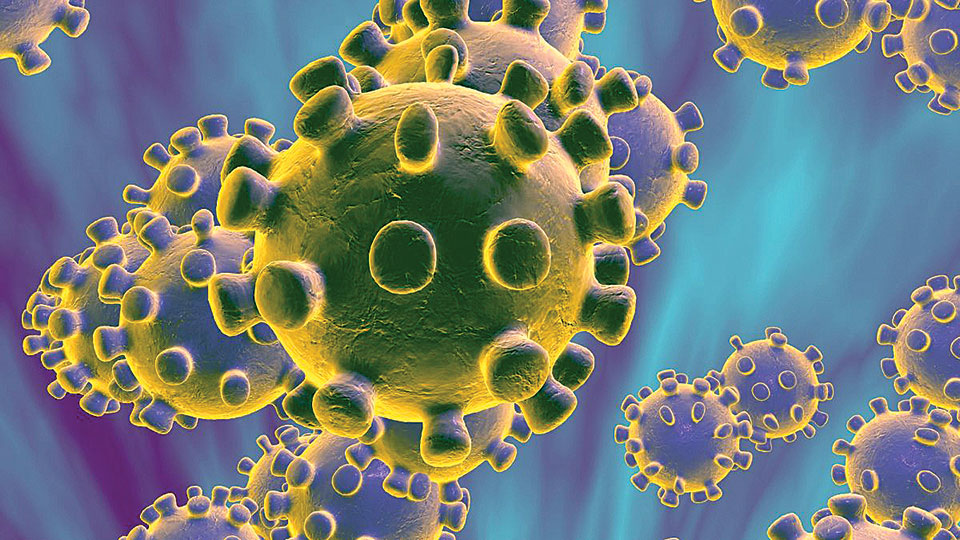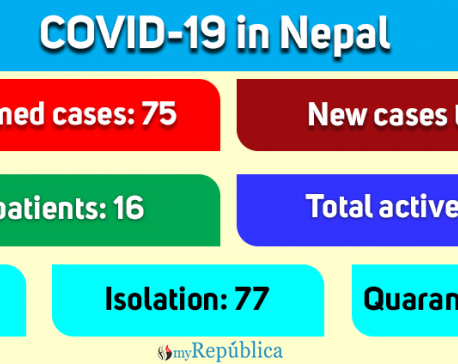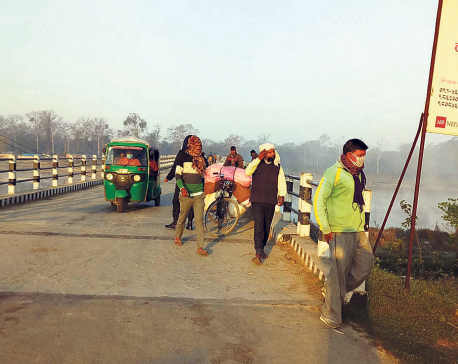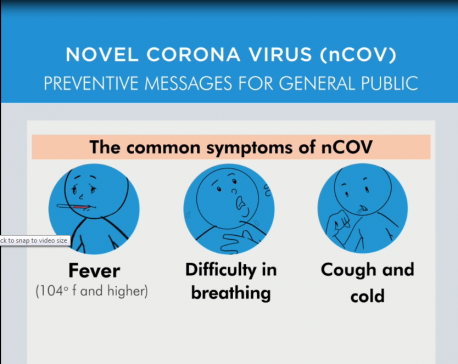
OR


Mukesh Adhikari
The author is Public Health Officer at Department of Health Service, Teku, Kathmandunews@myrepublica.com
Observing the panic of Nepali citizens in China, everyone agrees to bring them back. But given the level of preparedness and response system of Nepal, the decision could become counterproductive
Given the current situation of the rapid spread of novel coronavirus, a mysterious virus which originated from the Wuhan city of China and later spread around the globe, a number of questions regarding the appropriate interventions have been raised in the scientific arena. One of the questions is whether mass quarantine is effective to prevent the transmission of coronavirus. Although the practice of quarantine began during the 14th century to prevent the epidemic of plague, in which ships arriving from infected ports were allowed to stay for 40 days before landing, there is no clear-cut evidence that mass quarantine is effective. However, a number of countries including the United States evacuated their citizens from ground zero—the city where the novel coronavirus originated—and other parts of China. Following the trends, Nepal is in the process of evacuating the citizens from Wuhan city.
Given the statement of the Director-General of WHO that the catastrophic effects of the coronavirus would be much larger if the outbreak spread to low-income countries having poor resources, the authorities in Nepal should be extremely cautious about the various complications that might occur due to evacuation and quarantine of Nepali citizens from China.
Two epidemiological terminologies ‘isolation’ and ‘quarantine’ are really important to understand what actually is the distinction between the two. Isolation is the process of separating sick people having contagious disease from people who are not sick for a period of the time until which they can transmit the infection. Whereas, quarantine is the process of separating and restricting the movement of the person who was exposed to the contagious disease to observe whether they become sick or not. At the same time, it is focused to limit the transmission of disease during the incubation period because asymptomatic cases can transmit the infection.
It is highly debatable whether the government of Nepal should evacuate the Nepali citizens from China. Observing the panic situation of the Nepali citizens in China, no doubt, everyone agrees to bring them back to Nepal. However, at the same time, analyzing the current preparedness and response system of Nepal, the decision can be counterproductive as well.
The preparedness of the government regarding quarantine can be easily estimated by the lackadaisical style of the government authorities to decide the appropriate place for quarantine. No doubt, the Chinese government would only allow those Nepali citizens to depart who are not confirmed for coronavirus by the application of available technologies. But, the most important question is: Are we capable of containing viruses through the quarantine? Are the sites where the government is planning to perform quarantine well-equipped to monitor the suspected individuals? Are we aware about the possible chance of transmission of infection from asymptomatic cases? Do we have the capacity to diagnose the infection within a short period of time through laboratory examination? Given the incipient health care system and analyzing the response to the epidemic in past events, it would be an arduous job to perform effective quarantine. The government officials should be wary of various aspects of quarantine. Politically, it seems very easy to bring Nepali citizens from China. Technically, it would be the most difficult task as we don’t have prior experience of mass quarantine.
Additionally, given the proven fact of human-to-human transmission of coronavirus, we need to be prepared for unforeseen circumstances when there is the transmission of infection between the evacuees, and from the evacuees to other people. Let’s pray that we would not see such a phenomenon. However, the key stakeholders need to ask themselves whether our response system is capable to tackle possible havoc. Having well-equipped hospitals, laboratories, and a robust response system, China is facing a huge challenge and struggling to tackle the crisis of coronavirus. In such circumstances, we could easily imagine the possible crisis that may occur in Nepal. Is the only one tertiary level infectious disease hospital, Sukraraj Tropical and Infectious Disease Hospital, capable of tackling possible crises? Are our public and private hospitals at national and provincial levels ready to support the government plans? Are they well-equipped to treat the possible cases and contain the virus? Can we assure the frontline health workers to perform their duties with full-fledged confidence? These are the questions we need to answer regarding our outbreak response system.
Another aspect of quarantine is the assurance of the legal rights of people. While analyzing the Infectious Disease Act 2020 of Nepal, under the article of ‘powers to make special provision’ there is just only a single word of ‘quarantine’ but the detail of which is not mentioned clearly. It doesn’t mention what are the duties of the government while doing mass quarantine. More importantly, it doesn’t depict the extent to which the freedom of the people under quarantine will be compromised.
Given the challenges related to preparedness, response, and legality of the quarantine, perhaps, it would be the most difficult trade-off for the key stakeholders at the Ministry of Health and Population including other key agencies. Moreover, on the one side, the government authorities have to prepare the sites for effective quarantine, while on the other side, they should educate the general public about the process and purpose of quarantine they are doing. There has already been some sort of pushback from the local community regarding the selection of the sites for quarantine. The authorities should convey a clear message of quarantine through various media. At the same time, how to control misinfodemics—a scientific term coined to denote the rapid spread of misinformation about health and disease that can be detrimental toward the health of a large number of people—is very important because there has been an astronomical rise of false information regarding coronavirus around the world.
If we are prepared for the abovementioned possible crisis and ready to respond, we must evacuate the Nepali citizens from China as soon as possible. An equally important, but often overlooked agenda is that the key stakeholders and politicians must learn a great lesson from this event to build a resilient and robust health care system for tackling a possible outbreak in the future.
You May Like This

Six more people test positive for coronavirus in Nepalgunj, total cases in Nepal climb to 75
KATHMANDU, May 3: Another six people tested positive for the novel coronavirus in Nepalgunj on Sunday evening, the Ministry of... Read More...

Govt mulls complete closure of border with India
KATHMANDU, March 20: As the novel coronavirus spreads across the globe including South Asia, the Nepal government is thinking about... Read More...

Novel Coronavirus (nCOV) Preventive messages for general Public
Novel Coronavirus (nCOV) Preventive messages for general public. The common symptoms of nCov ... Read More...




Just In
- MoHP cautions docs working in govt hospitals not to work in private ones
- Over 400,000 tourists visited Mustang by road last year
- 19 hydropower projects to be showcased at investment summit
- Global oil and gold prices surge as Israel retaliates against Iran
- Sajha Yatayat cancels CEO appointment process for lack of candidates
- Govt padlocks Nepal Scouts’ property illegally occupied by NC lawmaker Deepak Khadka
- FWEAN meets with President Paudel to solicit support for women entrepreneurship
- Koshi provincial assembly passes resolution motion calling for special session by majority votes







_20220508065243.jpg)






Leave A Comment